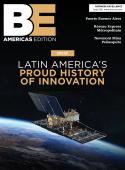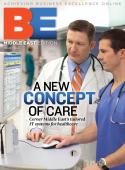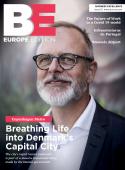OntarioÔÇÖs QueenÔÇÖs University takes a realistic approach to sustainability, Jenn Monroe reportsIn one year, September 2009, QueenÔÇÖs University in Kingston, Ontario, is planning to celebrate the completion of Phase I of its QueenÔÇÖs Centre, a new athletics, recreational and student life complex that will feature the new School of Kinesiology and Health Studies, a varsity gymnasium, an aquatic center, a fitness and weight center, and an underground parking garage. This celebration most likely will recall how the university successfully met the challenges the project is facing today.Stated simply, rising construction costs have put the project over budgetÔÇöabout $27 million more than planned. It could have been worse, however, without cost-saving efforts put into place by the project management team. Andrew Simpson, vice-principal of operations and finance, says a value engineering exercise led by Ann Browne, associate vice-principal of facilities, saved the university more than $20 million. ÔÇ£It really was an all-encompassing review that involved the architect, the construction manager (PLC), our management team and our key engineers as well,ÔÇØ Simpson says. ÔÇ£It involved getting down room by room, component by component. We looked at what materials and design elements we could change yet retain the program. We wanted to deliver the same product but at a lower overall cost.ÔÇØ For example, the original design called for eight-foot doors that require fittings for support. These were switched to seven-foot doors, which do not need the same level of support fittings. Other changes were made in the mechanical and electrical systems and the interior and exterior finishes, all without significantly altering the original requirements.These requirements include achieving LEED certification. In fact, all new construction at QueenÔÇÖs University will be built to meet at least those standards. ÔÇ£It is one of our core principles and applicable to all construction,ÔÇØ Simpson says. ÔÇ£Our minimum is LEED certification, but weÔÇÖll be looking for opportunities to go up.ÔÇØAn athletics facility poses sustainability challenges, especially one that features an aquatics center. Even so, the QueenÔÇÖs Centre was designed to meet LEED certification, and Simpson says it is still on target.Sustainability is a growing part of the QueenÔÇÖs University culture. Seeing this, Simpson established the Office of Sustainability in April 2008. ÔÇ£I see the purpose for establishing the office was for it to play a lead role in coordinating activities and to bring information together,ÔÇØ he says.QueenÔÇÖs University already has made great efforts in terms of sustainability. Beamish Monroe Hall, also known as the Integrated Learning Centre, was built before LEED was available in Canada but achieved a four-green-leaf rating on the BRE Environmental Assessment Method (BREEAM) and the 2005 Award of Excellence in Innovation in Architecture from the Royal Architectural Institute of Canada. Additionally, QueenÔÇÖs University has built a co-generation plant, which is connected to its heating plant to help increase the efficient generation of steam while providing power. This plant also supports two hospitals in the city of Kingston, and Simpson says the university is working with those hospitals to achieve even more efficiencies. Faculty and students are involved in sustainability as well. In January 2008, the university announced the creation of the new Sustainable Bioeconomy Centre, a research center that will focus on moving society from the current fossil-fuel-based economy to the biological-resources-based economy of the future. QueenÔÇÖs also has a student-run AMS Sustainability Office that employs a full-time student sustainability coordinator and operates three successful committeesÔÇöResidence Energy Challenge, Greenovations, and Students Taking Responsible Initiatives for a Viable Environment (STRIVE)ÔÇöthat provide volunteer opportunities for more than 60 students every year. QueenÔÇÖs University also has created a successful means of communicating information to its 20,000 students and 5,000 faculty and staff. ÔÇ£The communication challenge is an enormous one,ÔÇØ Simpson says, ÔÇ£and we worked hard to achieve success.ÔÇØ Simpson is humble about the universityÔÇÖs progress, however. ÔÇ£I think we are a long way from where we want to be,ÔÇØ he says. ÔÇ£There is so much more that needs to be done. We havenÔÇÖt yet answered the question of what some of the big sustainability targets will be for QueenÔÇÖs University as a whole.ÔÇ£The key to being successful is not about the square footage of space but the environment and atmosphere you create,ÔÇØ he continues. ÔÇ£We need to think about whatÔÇÖs going to attract people to come to our place. Having a sustainable environment is going to be a key of campuses of the future.ÔÇØQueenÔÇÖs UniversityÔÇÖs campus of the future will include not only the QueenÔÇÖs Centre but also a new performing arts center on the waterfront. ÔÇ£ItÔÇÖs going to be stunning,ÔÇØ Simpson says. ÔÇ£The architect is Sn├©hetta from Norway, who did the memorial at the World Trade Center in New York City and the Alexandria Library in Egypt. In Norway theyÔÇÖre known for facilities on the water, and even over the water. ÔÇ£ItÔÇÖs going to be fantastic, with very strong sustainability features,ÔÇØ he continues. This also will be the focus for the planned additions to the business and medical schools. ÔÇ£We always want to start with that end in mind,ÔÇØ Simpson says. ÔÇ£To start with that standard and the principle that weÔÇÖre going to achieve it. When we bring people together we can use that as a focus for discussion. Our approach has to be a collaborative one.ÔÇØ┬á









